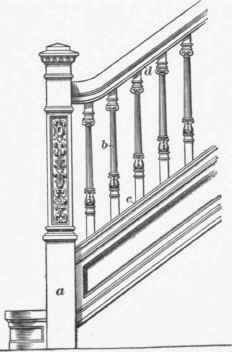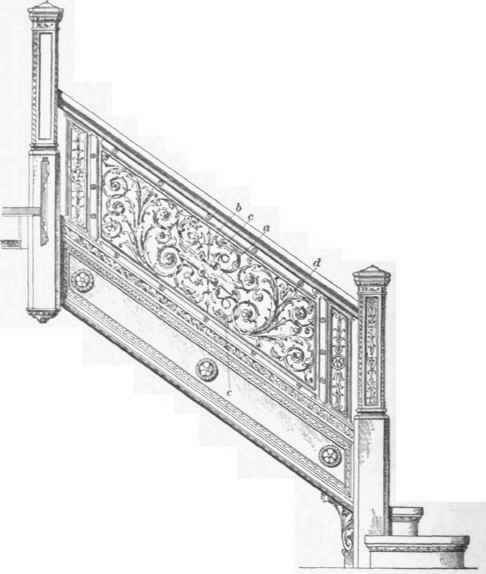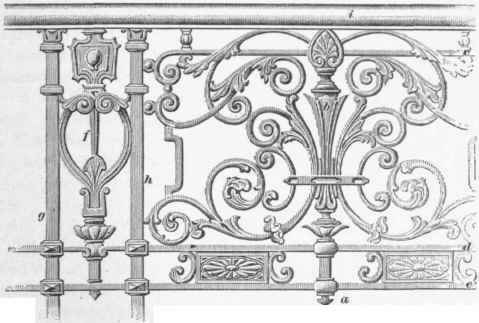Friezes And Balustrades
Description
This section is from the book "A Treatise On Architecture And Building Construction Vol3: Stair Building, Ornamental Ironwork, Roofing, Sheet-Metal Work, Electric-Light Wiring And Bellwork", by The Colliery Engineer Co.. Also available from Amazon: A Treatise On Architecture And Building Construction.
Friezes And Balustrades
27. In Fig. 27 is shown a cast-iron frieze. The ornament is bold, and has considerable relief, but, being entirely on the surface, and not undercut, it does not present any special difficulty in molding, and the model may be withdrawn from the sand without injuring the ornament. The modeling of this frieze should be in clay, and then cast in plaster, and the working mold cast from this last in the same material.

Fig. 27.

Fig. 28.
28. Figs. 28 and 20 are examples of stair balustrades or panels. Figs. 30 and 31 are examples suitable for exterior or exposed positions. The newel a in Fig. 28 is modeled, molded, cored, and cast in the same manner as the one before described. The balusters b are modeled in wood and cast solid. They are secured by countersunk tap bolts at the bottom and top to an iron strap or rail c and d 1/4 inch thick, and of width equal to the baluster base, or to a channel iron.

Fig. 29.

Fig. 30.

Fig. 31.
The characteristic features of the design shown in Fig. 29 are the cartouche a at the center of the panel, the trident b which pierces it, the dolphins c which act as supporters, and the scrolls d which complete a very rich and artistic panel. This design for a stair rail is especially good, as it fills the void between the string and rail, affording perfect protection, while at the same time the design is not overloaded with ornament, and is very well constructed.
The features of the railing shown at Fig. 30 are the long and short panels forming its divisions. The large panels a are strengthened and braced vertically at the middle, with a post b running from the top rail to the lower rail, and horizontally with the rails c, d, and c. The short panel f is let in between the posts g and h, combining them. The hand rail i is made of a brass or bronze pipe.
The rail at Fig. 31 is composed of a series of balusters a and panels b let in between them. The panel is well secured at four points on each side. The hand rail is formed of iron with a molded cap piece screwed on.
Continue to:


